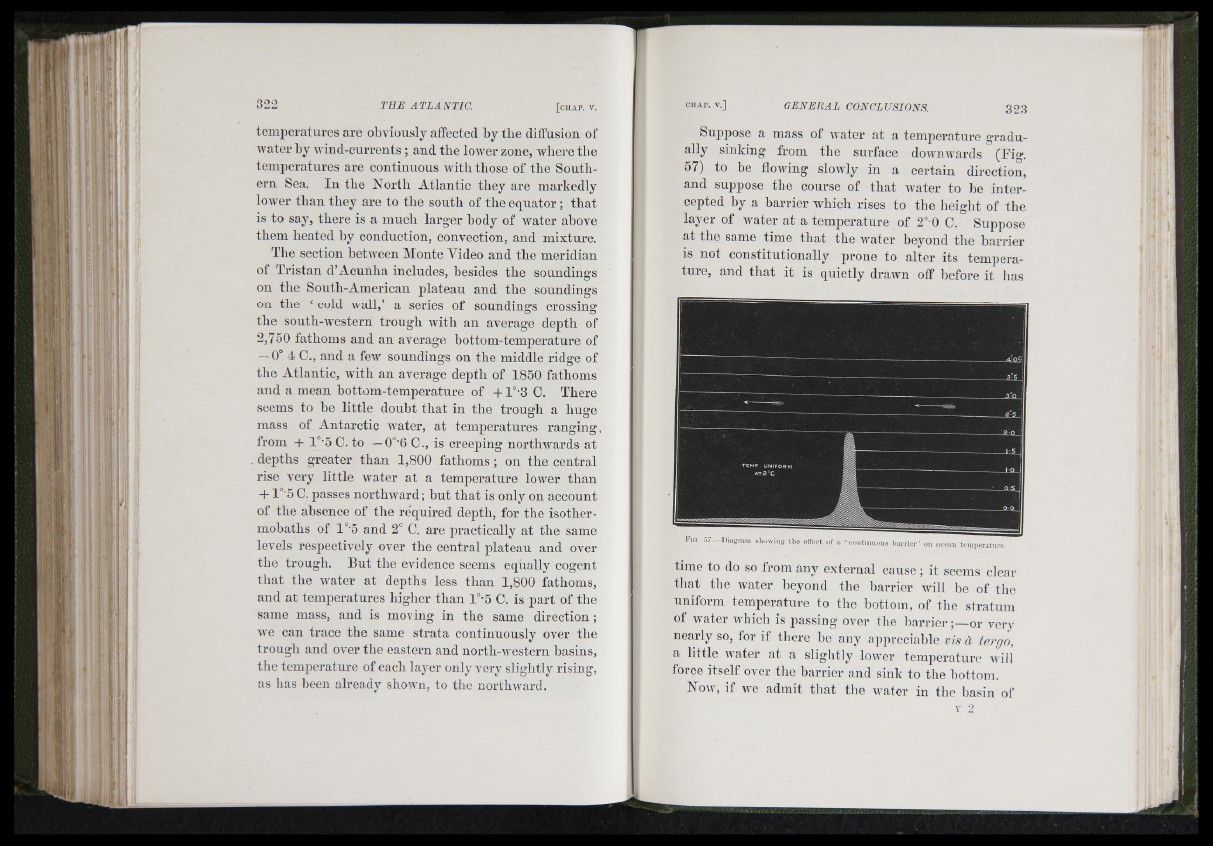
li
i l
i I
i!'
tioli
‘'LIì;
1 !l
i È
temperatures are obviously affected by tbe diffusion of
water by wind-currents; and tbe lower zone, wbere tbe
temperatures are continuous witb tbose of tbe Sontbern
Sea. In tbe Nortb Atlantic tbey are markedly
lower tban tbey are to tbe south of tbe equator; that
is to say, tbere is a much larger body of water ahove
them heated hy conduction, convection, and mixture.
The section hetAveen Monte Video and the meridian
of Tristan d’Acunha includes, besides the soundings
on the South-American plateau and the soundings
on the ‘ cold Avail,’ a series of soundings crossing
the south-western trough with an average depth of
2,750 fathoms and an average bottom-temperatnre of
- 0° 4 C., and a few soundings on the middle ridge of
the Atlantic, Avith an average depth of 1850 fathoms
and a mean hottom-temperature of + 1°-3 C. There
seems to he little doubt tb a t in tbe trough a huge
mass of Antarctic Avater, at temperatures ranging,
from -f- 1°‘5 C. to — 0°'6 C., is creeping nortliAA'ards at
. depths greater than 1,800 fath om s; on the central
rise very little water at a temperature lower than
-f 1°’5 C. passes northAvard; hut th a t is only on account
of the absence of the required depth, for the isothermobaths
of 1°'5 and 2° C. are practically at the same
levels respectively over the central plateau and over
tbe trough. But the evidence seems equally cogent
tb a t the AA'ater at depths less than 1,800 fathoms,
and at temperatures bigber than l°-5 C. is pa rt of tbe
same mass, and is moving in the same direction ;
Ave can trace the same strata continuously over tbe
trough and over tbe eastern and nortb-western basins,
the temperature of each layer only very slightly rising,
as has been already sboAvn, to the nortliAvard.
Suppose a mass of Avater at a temperature gradually
sinking from tbe surface doAvnAvards (Fig.
57) to be flowing slowly in a certain direction,
and suppose the course of th a t water to be intercepted
by a barrier which rises to the height of the
layer of water at a temperature of 2° 0 C. Suppose
at the same time tb a t the water beyond tbe barrier
is not constitutionally prone to alter its temperature,
and th a t it is quietly drawn off before it has
l‘ ia. 5i. -D iag ram slmwiiig tlie oH'ect o f a ‘ eo iitim io u s b a r r i e r ' on o ce an tem p e ra tu re .
time to do so from any external cause; it seems clear
tbat tbe water beyond tbe barrier Avill be of tbe
uniform temperature to tbe bottom, of tbe stratum
of Avater which is passing over tlie barrier;—or very
nearly so, for if tbere be any appreciable visd tergn,
a little water at a slightly loAver temperatnre Avill
force itself over tbe barrier and sink to tbe bottom.
Now, if AA'e admit tbat tbe Avater in tbe basin of
V 2